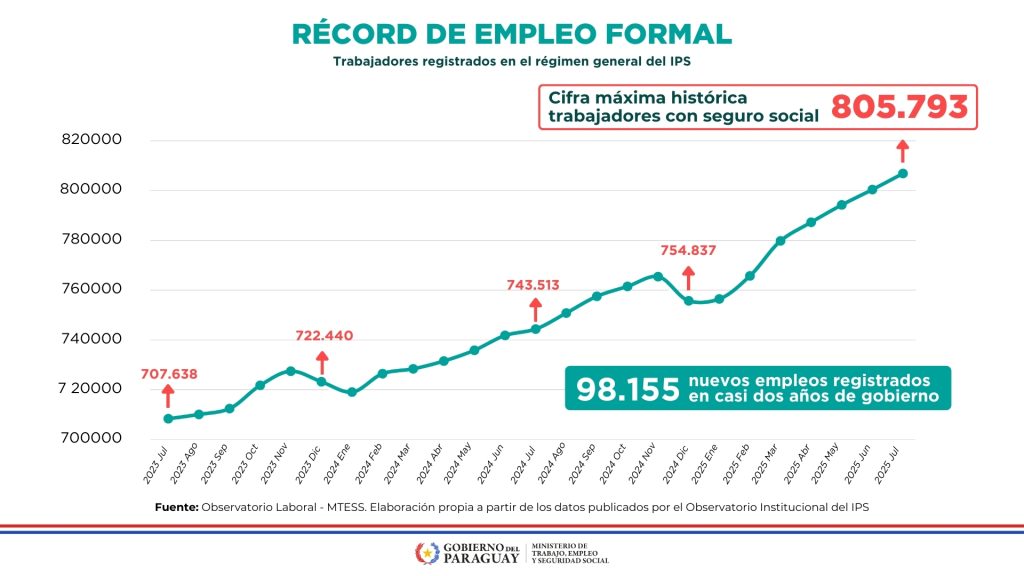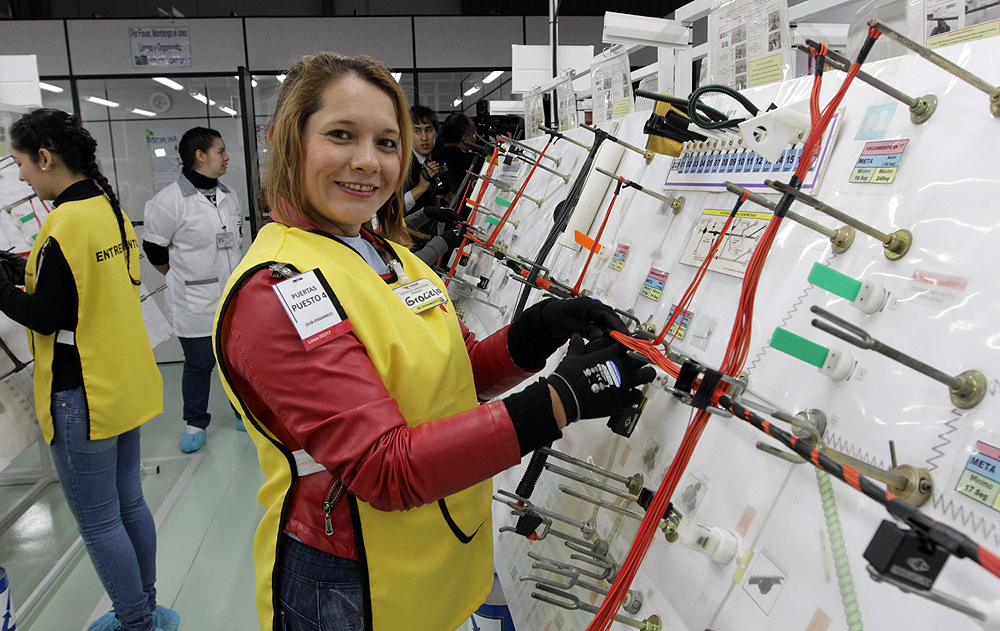The Ministry of Labour, Employment and Social Security (MTESS) is celebrating a record achievement in Paraguay’s labour history. By the end of July, the country had reached a total of 805,793 registered formal jobs. This milestone confirms that in less than two years, a job growth of 98,155 workers have been incorporated into the general regime of the Social Security Institute (IPS). Paraguay’s unemployment rate fell to 5.6%, the lowest figure recorded since 2017.
According to the MTESS, these results reflect the success of a comprehensive strategy that has been implemented. This includes inspections to ensure compliance with labour rights, regulatory measures, and the simplification of procedures to encourage business formalisation.
“We achieved our goal five months ahead of schedule. Now we celebrate an achievement that shows the Paraguay we are building,” said MTESS Minister Mónica Recalde, when announcing the new figures achieved in the country.
The 2025 record breaking numbers
The record numbers for 2025 consolidate a sustained trend of growth in the formalisation of jobs. The data from previous years show:
- July 2023: 707,638 contributors.
- July 2024: 743,513 contributors.
- July 2025: 805,793 contributors.
This represents an absolute year-on-year increase of 62,280 new formal jobs, equivalent to an 8.4% rise in the number of workers protected by the social security system.


The impact of Zero Hunger Programme
The Zero Hunger school feeding programme has also played a crucial role in this record. By its first anniversary, the programme had already delivered 254 million meals to thousands of children in educational institutions nationwide. This achievement was made possible through the dedication of thousands of collaborators.
In August 2024, the project began in 90 districts and has now been extended to all 263 districts in the country. As a result, more than 20,000 workers, mostly women, have been formally employed to cook for more than one million children in schools across the country every day.


Maquila sector significant job growth contributor
The maquila sector contributes significantly to the formal job creation in the country. It currently employs a total of 34,388 workers, representing an increase of 29% compared to July last year. This growth reflects the sector’s continued success and expansion over the past year.
By the end of July, maquila exports had reached US$673 million, an increase of 9% compared to the period between January and July of the previous year. This export growth directly translated into the creation of 7,479 new jobs over the past twelve months. As a result, the total number of registered workers rose from 26,909 in July 2024 to the current 34,388. In January, the Paraguayan government announced that maquila companies created more than 30,000 jobs.
Within the maquila sector, most jobs are generated in auto parts manufacturing, employing 8,362 workers. The second largest employer is the clothing and textile industry, which provides work for 7,650 people. Intangible services follow with 3,688 workers, while plastics and plastic products employ 2,542. Chemical and pharmaceutical manufacturing accounts for 2,514 jobs, wood and wood products for 1,477, and food products for 1,116 workers.




Lowest unemployment rate since 2017
According to data from the National Statistics Institute (INE), Paraguay’s employed population grew from 2,869,687 in the first quarter of 2024 to 2,911,705 in the same period of 2025. At the same time, the unemployment rate fell to 5.6%, the lowest figure recorded in the past eight years. This progress represents a year-on-year reduction of more than 41,000 people in unemployment.
The data shows job growth across all sectors. The primary sector (agriculture, livestock, hunting, and fishing) registered 13,392 new jobs, while the secondary sector (construction) added nearly 15,000 workers. The tertiary sector (services) experienced the largest increase, with 29,301 additional employees. In terms of gender distribution, the figures highlight an important rise in female employment, with 34,257 more women working compared to the same quarter of the previous year.


